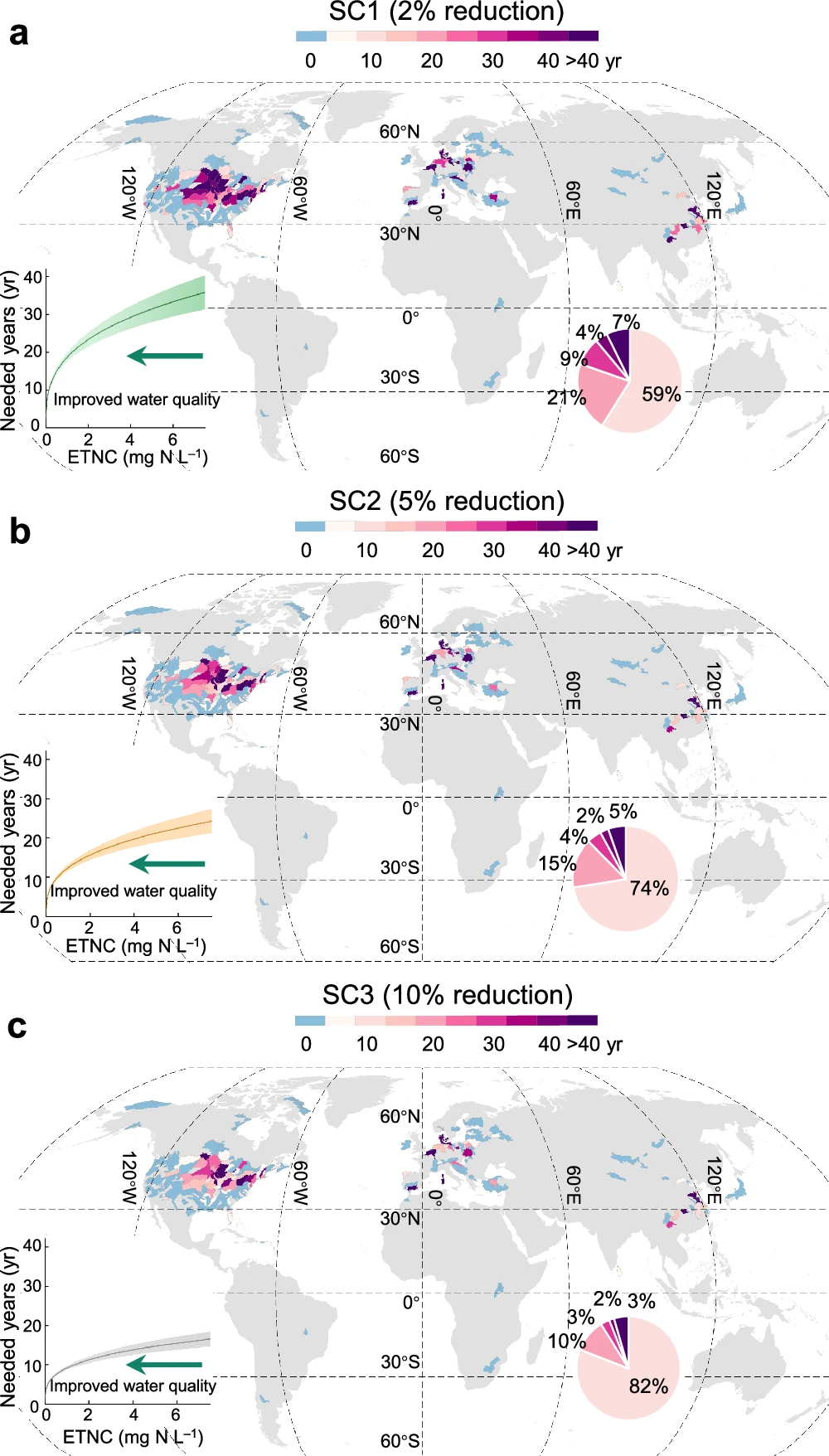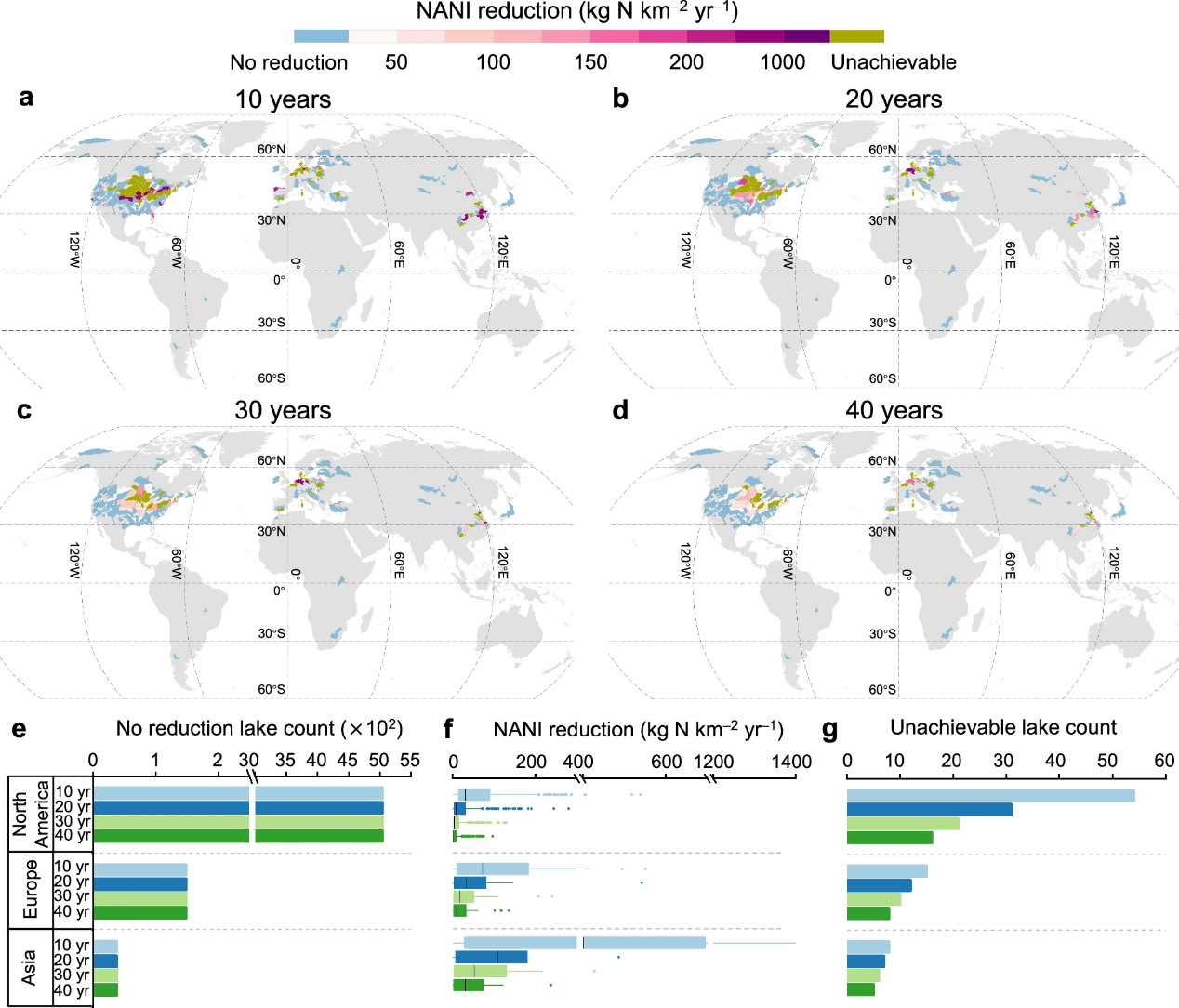
Lakes play a vital role in nitrogen (N) removal and water quality improvement, yet their efficiency varies due to differing watershed N input and lake characteristics, complicating management efforts. Here Prof. YAN Xiaoyuan, Prof. XIA Yongqiu and their research team established the N budget for 5768 global lakes using a remote sensing model. They found that watershed N input reduction and lake water quality improvement are nonlinearly related and depends on lake N removal efficiency. A 30% reduction in N loading in watersheds with high N removal efficiencies can improve cumulative water quality by over 70%. Stricter reduction could accelerate achieving water quality goal (≤1 mg N L–1), shortening the time by up to 30 years for most lakes. However, heavily polluted lakes with low N removal efficiencies (50 of 534 lakes with >1 mg N L–1) may not achieve the UN’s clean water SDG by 2030, even with a 100% N input reduction. Their research highlights the need for targeted N management strategies to improve global lake water quality.
This study published in Nature Communications in March 2025.

Fig. 1: Global patterns of the time needed to achieve the water quality goal (≤1 mg N L–1) under different watershed N input reduction scenarios.
Fig. 2: Global patterns of the required reduction in watershed net anthropogenic N input (NANI) to achieve the lake water quality goal (≤1 mg N L–1) within 10, 20, 30, and 40 years.
Attachment Download: